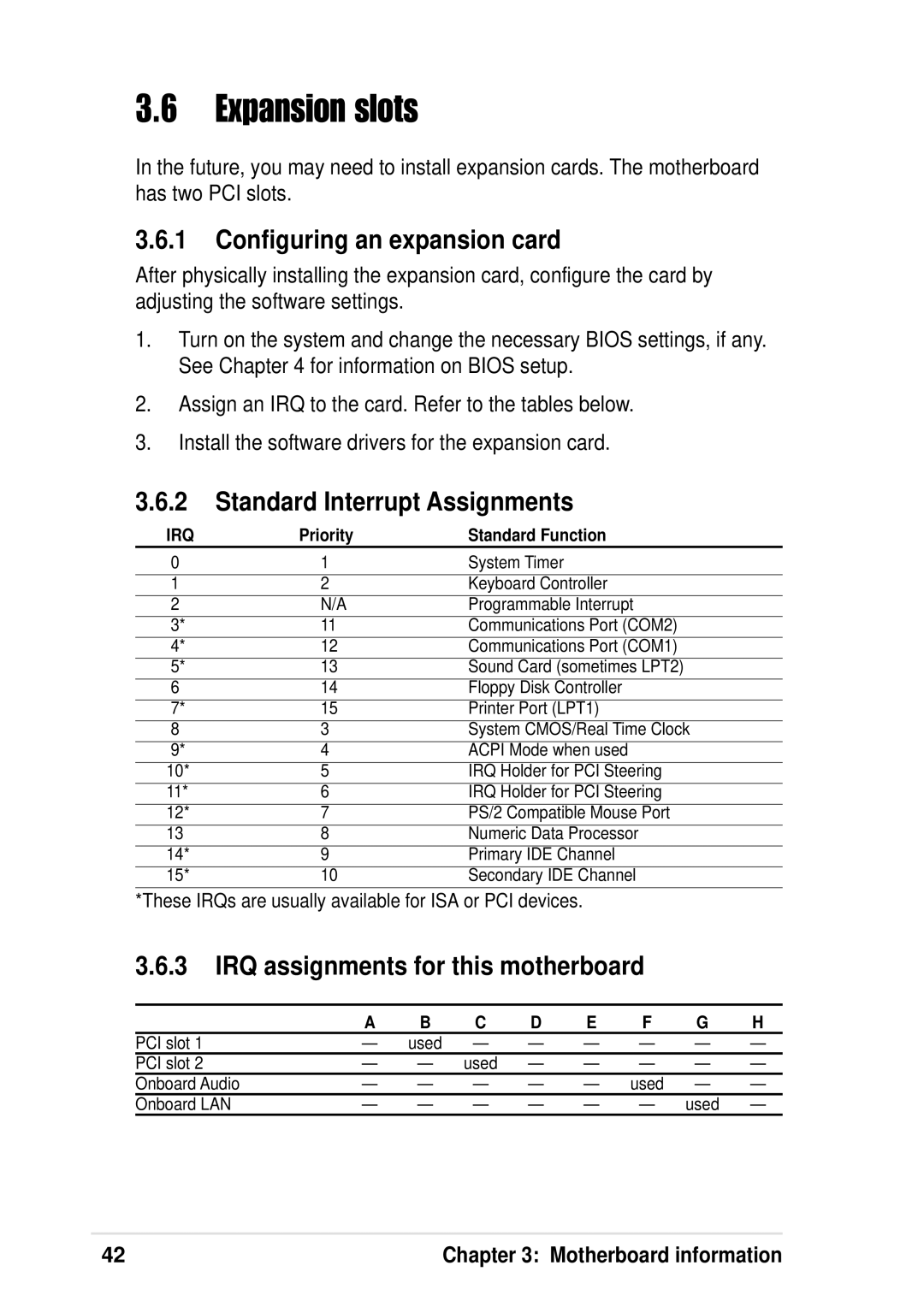
3.6 Expansion slots
In the future, you may need to install expansion cards. The motherboard has two PCI slots.
3.6.1Configuring an expansion card
After physically installing the expansion card, configure the card by adjusting the software settings.
1.Turn on the system and change the necessary BIOS settings, if any. See Chapter 4 for information on BIOS setup.
2.Assign an IRQ to the card. Refer to the tables below.
3.Install the software drivers for the expansion card.
3.6.2Standard Interrupt Assignments
IRQ | Priority | Standard Function |
0 | 1 | System Timer |
|
|
|
1 | 2 | Keyboard Controller |
2 | N/A | Programmable Interrupt |
3* | 11 | Communications Port (COM2) |
4* | 12 | Communications Port (COM1) |
5* | 13 | Sound Card (sometimes LPT2) |
6 | 14 | Floppy Disk Controller |
7* | 15 | Printer Port (LPT1) |
8 | 3 | System CMOS/Real Time Clock |
9* | 4 | ACPI Mode when used |
10* | 5 | IRQ Holder for PCI Steering |
11* | 6 | IRQ Holder for PCI Steering |
12* | 7 | PS/2 Compatible Mouse Port |
13 | 8 | Numeric Data Processor |
14* | 9 | Primary IDE Channel |
15* | 10 | Secondary IDE Channel |
*These IRQs are usually available for ISA or PCI devices.
3.6.3IRQ assignments for this motherboard
| A | B | C | D |
| E | F |
| G | H |
PCI slot 1 | — | used | — | — |
| — | — | — | — |
|
PCI slot 2 | — | — | used | — |
| — | — | — | — |
|
Onboard Audio | — | — | — | — | — |
| used |
| — | — |
Onboard LAN | — | — | — | — | — | — |
|
| used | — |
42 | Chapter 3: Motherboard information |
